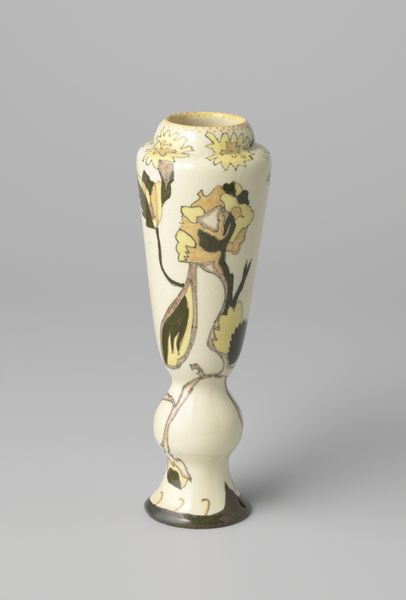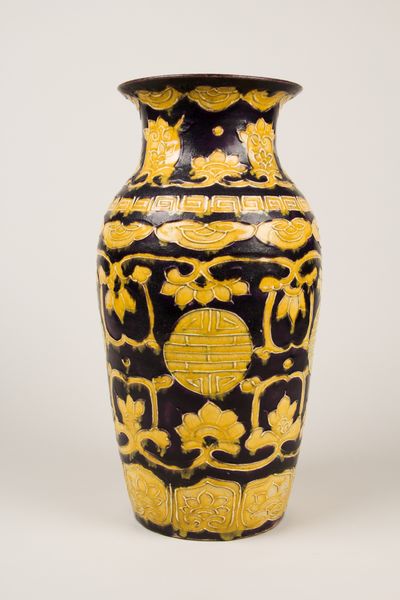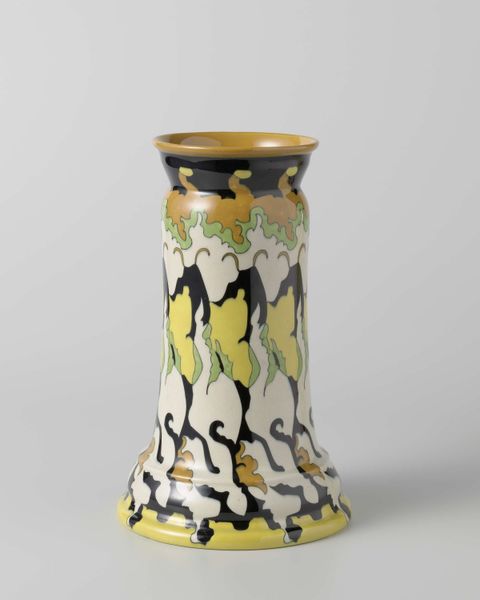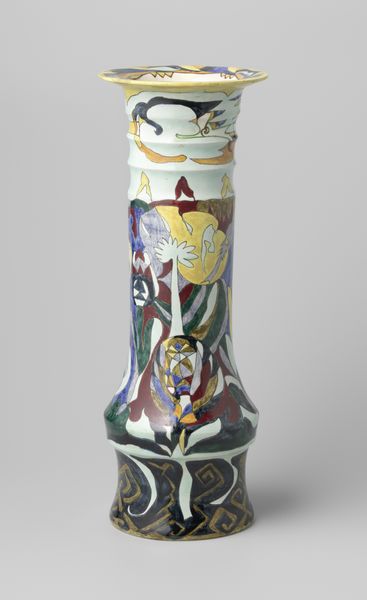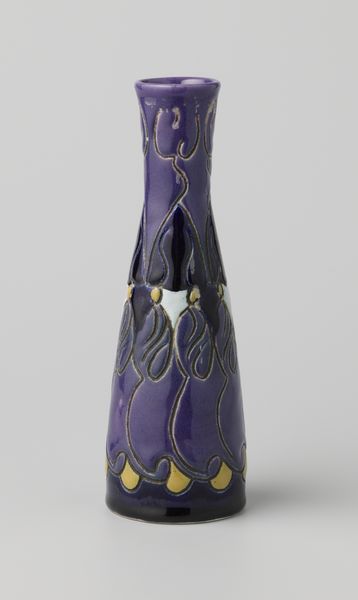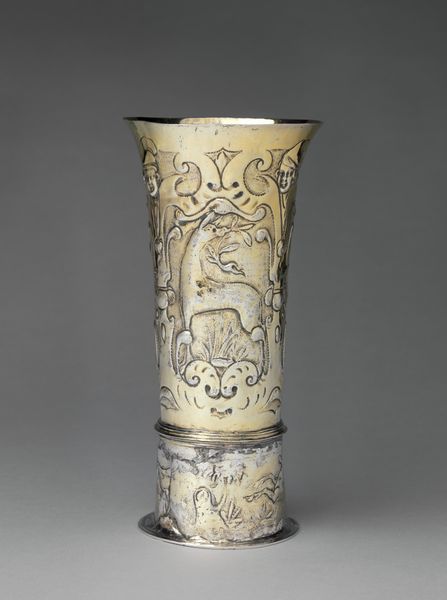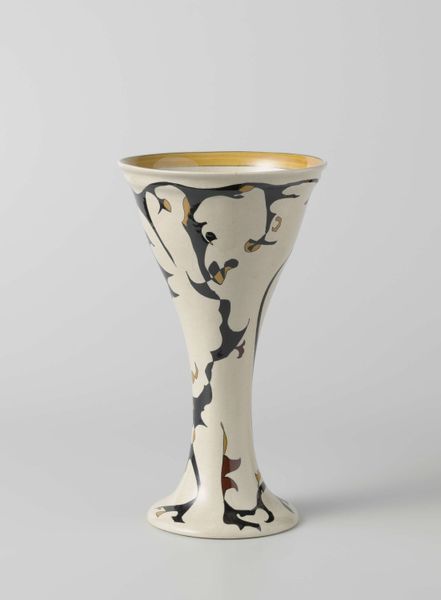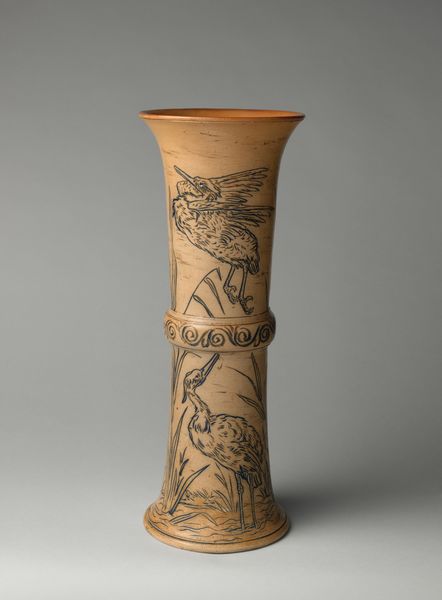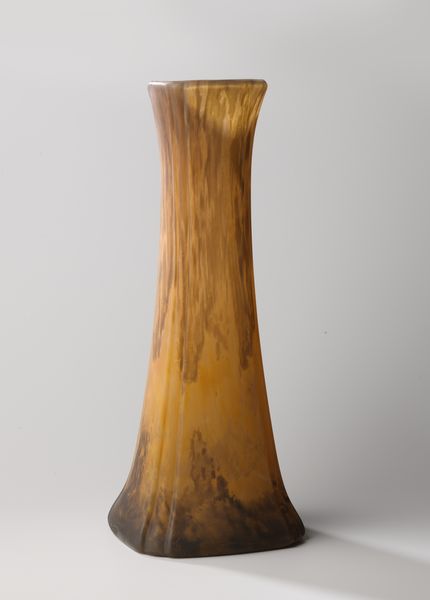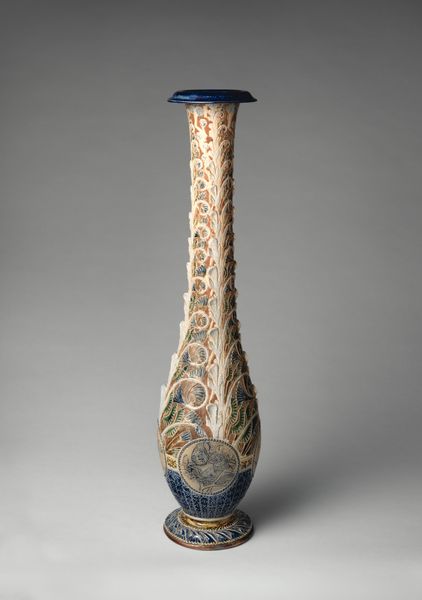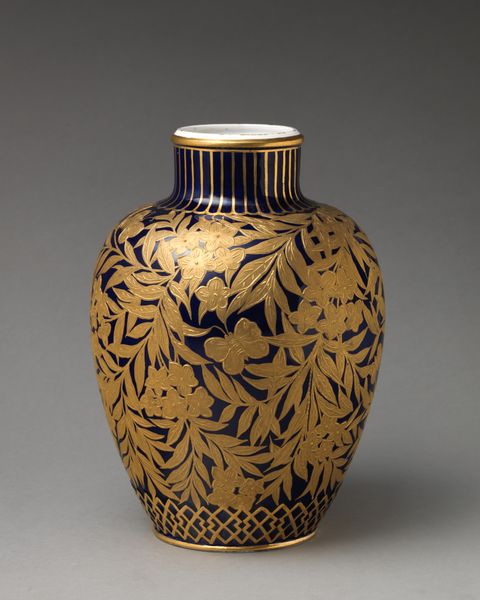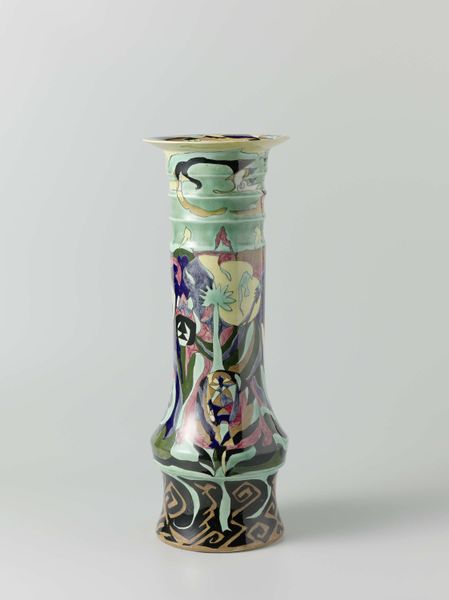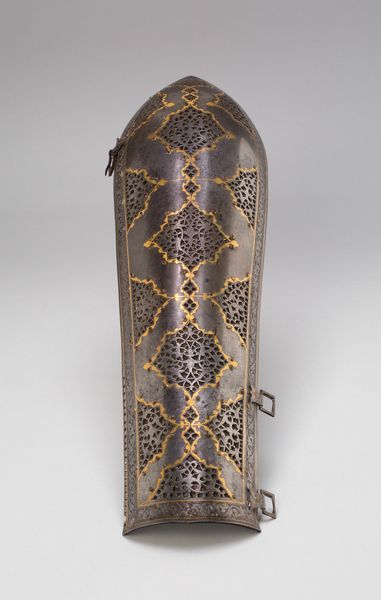
Vaas met gestileerd decor in donkerblauw en groen op bruin-roze fond 1894
0:00
0:00
ceramic
#
art-nouveau
#
ceramic
#
decorative-art
Dimensions: height 15.8 cm, diameter 6.0 cm
Copyright: Rijks Museum: Open Domain
Curator: What strikes me immediately is this incredible balance between organic form and stylized abstraction. It feels both ancient and strikingly modern. Editor: I agree, there's a timeless quality to it. Let’s contextualize the work. This vase with a stylized decor in dark blue and green on a brownish-pink background was crafted around 1894 by N.V. Haagsche Plateelfabriek Rozenburg. It exemplifies Art Nouveau through the medium of decorative ceramic arts. What is particularly significant is its grounding in the Netherlands during a vibrant period of production. Curator: Right. I see the Art Nouveau influence in those sweeping lines of the central pale motif, but those colors are unexpectedly muted, not the typical exuberance I associate with the style. It almost has a melancholy to it. Editor: That somber tonality may be because of the types of pigments available, or even to invoke feelings specific to that locale at that historical moment, it speaks to available technologies in ceramic production—the materials, firing processes—dictating aesthetic outcomes just as much as the designer's vision. The "donkerblauw en groen" aren't just choices; they're contingent realities of that material world. Curator: And they really shape the feel of it. Like it has a foot in both a forest at twilight and an opulent salon! Editor: Exactly, it brings those spaces together. Furthermore, the ceramic itself highlights its use. This wasn’t created solely for fine art consumption in a gallery; its utility as a vase intertwines with aesthetic ambition. Think about the labor involved too in making something beautiful, in making art for common enjoyment rather than just something abstract for elites. Curator: Yes! It reminds you to literally "stop and smell the roses," it unites practical purpose with transcendent decoration. So even if someone couldn’t access high art venues, this domestic object provides art right inside their homes. Editor: So as a society transitioned towards wider industrial output in ceramics, studios could now imbue daily life with elements that sparked creativity right into the daily rhythms, challenging preconceptions of what objects might offer emotionally or intellectually. Curator: I leave seeing more layers within that vase. More shadows, yes, but more possibility of light coming. Editor: Indeed, seeing how societal shifts of production affect art enriches one's understanding of creative periods so drastically.
Comments
No comments
Be the first to comment and join the conversation on the ultimate creative platform.
